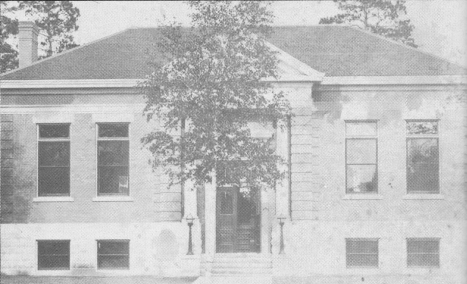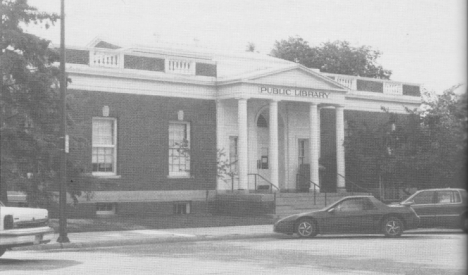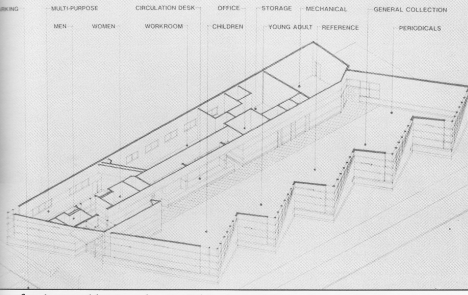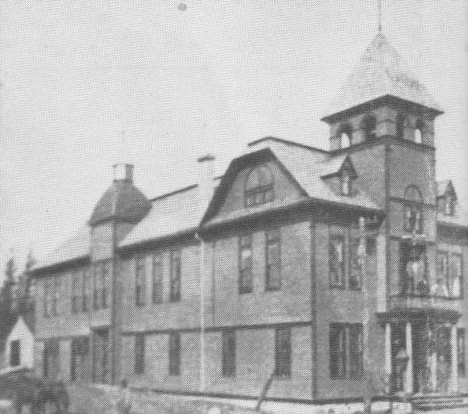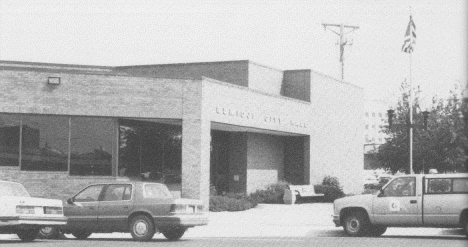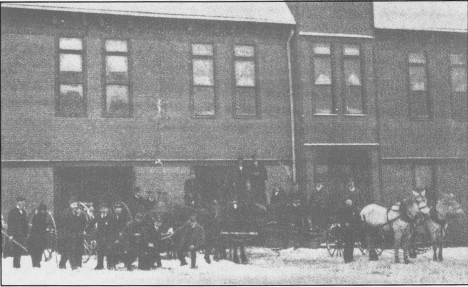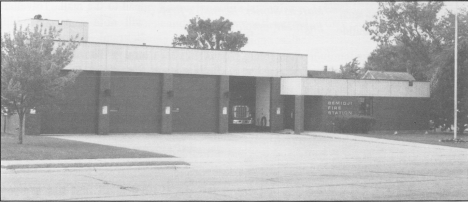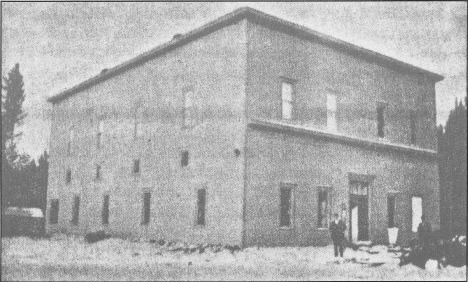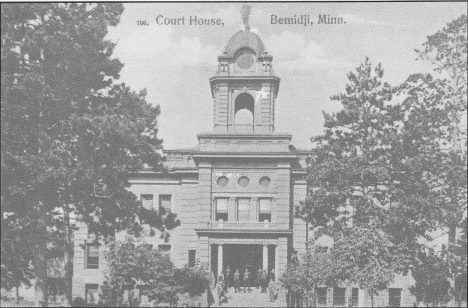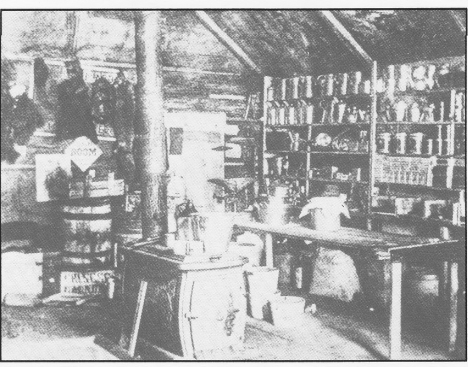 | | |
Home | Attractions | Businesses | Campgrounds | Cities & Towns | Government | History | Events | Links | Motels | Recreation | Resorts | Bookstore | Contact Us
| Great Links |
| Coupons! |
| Of Interest |
| Current Weather |
| Special Deals! |

Greetings from Bemidji, Minnesota, Fine Art Print

Lake Bemidji, Minnesota,
Fine Art Print
| Bemidji Area History |
Page 1 | Page 2 | Page 3 | Page 4 | Page 5 | Page 6
Bemidji's Public Library
Ruth Stenerson
"All members of the Council concurred...that the public library was a good idea," reported the Pioneer when the fifteen women of the Ladies Public Library Association brought their proposal to the City Council on February 4, 1904. So far these women had kept a library operating Tuesdays, Thursdays and Fridays 2:30 until 6:00 p.m. for some months. "It is the intention of the Council that Bemidji Library shall have the best and latest books available."
By April 14, 1904, the Pioneer reported, "Despite the blinding snowstorm prevalent last evening, there was a good attendance at the formal opening of the public library." It was housed in the court house.
When the city charter was adopted, the library came under the jurisdiction of the city. The library board, to consist of the mayor, the public school principal and three mayoral appointees ("two of which may be women") began its work February 25, 1907. By then there were 1400 volumes and an average circulation of five hundred volumes.
Early in 1908 Board Chairman A.P. Ritchie wrote to Philanthropist Andrew Carnegie inquiring about possibility of funding for the building. Carnegie promised $10,000 on the condition that the city provide the site and make appropriation for maintenance. Four months later the site had been approved at 5th and Bemidji. Eventually Carnegie gave $12,000.
| |
There was evident pride in the new building on that beautiful location. May 10, 1910, the Pioneer commented, "A fine library building, which only lacks a few more books of giving Bemidji one of the best libraries of any size in the state." In 1980 the building was placed on the National Registry of Buildings.
The library became a hive of activity. It provided service not only to the general public but to hospital patients and nursing homes. During World War II it was a War Information Center. Books were sent to the USS Beltrami, a coastal cargo vessel.
As late as 1942 library hours were 12 noon until 9 p.m. except for Sundays and holidays. Christmas teas brought out patrons; reading clubs and contests attracted children. Sinclair Lewis spoke there, encouraging attention to Minnesota authors such as Chidester. Rolvaag, Undset. (However did Norwegian author Undset get included?) Media programs were presented based on Beltrami County Historical Society sources.
After a half-century of use, the Carnegie Library had obviously become too crowded to serve the needs of the community. In 1961, the library was moved to the location of the former post office at Sixth and Beltrami. An open house February 3, 1962, introduced the public to the remodeled facility. The VFW presented a flag, the Jaycees a drop box for books; organizations gave money for books. Lila Brun, a member of the library staff for more than forty years at the time this is writtten, was appointed librarian.
| |
In 1970, Beltrami County and Bemidji became a part of the Kitchigami Regional Library system. Member units operate under a master contract by which Kitchigami furnishes staff and materials and the city accepts responsibility for facilities. The city has also allotted book monies.
By 1968 library hours had been lengthened, record albums and art prints were available to patrons, and book requests could be filled by the regional library.
In spite of initial rejoicing over "plenty of space for browsing," crowding again became a problem. Attempts to make the building handicapped-accessible helped but were inadequate. Nevertheless, with its tiny meeting rooms, the library introduced artists and writers to the community, including William Armstrong, Robert Treuer, Art Lee, William Borden, Will Weaver, Susan Houser, Gary Paulsen, Madeena-Agard Smith, and others.
In 1983 the local Friends of the Library held its first public meeting. It has raised thousands of dollars to help meet library needs, sponsored Chautauquas, and provided numerous faithful volunteers. Sidewalk sales grossed thousands of dollars, most used to buy books, but also for generous gifts to projects of the Foundation and for National Library weeks.
In 1985, the 75th anniversary of the library was marked by a style show in the original Carnegie Building. That year the Lions began to provide funds for books for the visually impaired. In 1992, the library was automated, again with much of the work done by dedicated volunteers and the fine staff of the kind which has blessed the library through the years.
By the mid-80's, crowding could no longer be ignored. Concerned citizens began to study ways in which a bigger, more modern library could be built. In 1987, library staff, Board and interested members of the community worked with a library consultant to prepare a Building Program proposal. Various methods of funding were explored, and attempts made to increase public awareness of library needs. Everyone wanted a new library; few were willing to be taxed for it.
In 1989, at the City Library Board's initiative, seven individuals formed a nonprofit corporation to expedite action and gather funds for a new library. It invited membership in the Bemidji Area Public Library Foundation, explored possible sites, and approached county and city governments for possible funding. Public demand for a new facility grew steadily. Hundreds of people responded to appeals from the Foundation; businesses and corporations as well as individuals contributed generously.
Action was precipitated in 1992 when the North Country Hospital Board offered a gift of four acres of its land for a new library. Foundation membership instructed its Board to accept that gift unless a downtown site were expeditiously located. Concerned by the idea of the library being built in other than a downtown location, the Downtown Development Authority located the site whereon the library now stands.
| |
About that time a retired Bemidji resident, John (Fred) Breen, presented a gift of $50,000 to the Foundation. Responding to all these developments, the City Council voted to use $1,500,000 of its liquor revenue funds for the building. The Foundation first raised $150,000 for the purchase of the site, then with the permission of the City Council raised an additional sum of more than $200,000 to increase the planned footage of the building.
Mayor Doug Peterson at this time appointed a Blue Ribbon Library Committee to carry the project forward. It did, working with the local Architectural Resources firm. Ground breaking occurred in the spring of 1994, and Bemidji's 13,900 square foot new library at Sixth and America went on to completion in 1995.
High praise goes to the many worthy citizens who are part of this history.
Bemidji Charters as City
Dorothy Boe
The City of Bemidji was chartered November 4, 1905, as a Home Rule city with 'strong mayor' government. Alva A. Carter was elected mayor, and in his inaugural message he stressed that there were not enough funds from license fees and fines for the City to pay off the $10,000 indebtedness. Taxes would have to be imposed. He also expressed his concern to get better fire protection, street grades, sewerage, sidewalks, and urged municipal ownership of an electric light plant. P.J. Russell was appointed city attorney, A.B. Hazen, street commissioner, and S.C. Bailey, police chief, Earl Geil, fire chief and Marcus Stoner, city engineer.
| |
By spring of 1909, with nine automobiles already in town and five others being brought overland, Stoner was prompted to start Bemidji's first concrete streets. He selected Bemidji's main commercial street. The two blocks were between Minnesota and Bemidji Avenues on 3rd Street. That same year, he contracted with J.H. Crouch to build ten miles of concrete sidewalks and ordered a new well with a steel tower to replace the old wooden tower at the end of 4th Street. Within a year Bemidji had a sanitary sewer capable of serving a 25,000 population, wells and a waterworks and concrete sidewalks for pedestrians. Most projects were paid for by liquor and gambling fees. Bemidji had as many as fifty saloons, not counting the gambling and gaming emporiums.
In 1914, the Federal Bureau of Indian Affairs ordered all saloons to cease and desist selling any liquor. Bemidji's law enforcement and attorney were thwarted City Hall -1994. trying to discontinue liquor sales. In 1917 the City of Bemidji made national news when Pussyfoot Johnson and his Federal Interior Department troops came with axes and destroyed the remaining stocks of hard liquor and beer. All communities close to the Indian reservations went dry overnight, bringing prohibition to northern Minnesota three years before the nation experienced it. Bemidji lost many major businesses, but continued to grow.
In 1915, Crookston Mill #1 burned and the following year the Village of Nymore petitioned for annexation and deeded all their property, including a village hall, chairs, two stoves, a table and fire apparatus to Bemidji for $1,500.
The mill was rebuilt but then a second disaster occurred in 1924. The Crookston Mill burned again and appeared to mark the end of Bemidji's lumber bonanza. The next year the city of 8,000 advertised being the 'Magic City of the North,' with five railroads, fifteen miles of watermains, ten miles of sewers, four miles concrete streets and twenty miles of sidewalks. The city continued to grow and prosper.
By vote of the citizens, a new charter was adopted in October, 1952, which provided for Council/City Manager form of government. The city still operates under this Home Rule Charter, with revisions made in November, 1982.
| |
Mayor and Council Members:
The first of 27 mayors was Alva A. Cater, appointed November, 1905, and replaced February 25, 1907, by John Pogue, the first elected mayor to serve a full two term. Included in some of the unusual mayorial experiences, in 1917 Mayor Charles
Vandersluis, along with other public spirited citizens, 'cleaned house' by round-
up 24 members of the International Workers of the World, and `shipped the I.W.W.'s out, bag and baggage, on a rail.' The I.W.W.'s, sometimes referred to as Wobblies,' were reportedly affiliated with he Communist Party.
Another interesting and dedicated mayor was Earl Bucklen. When Paul Bunyan was constructed in 1936, Earl was Civic and Commerce President. It Was his measurements that were used as 1/3 proportions of Paul. Later Bucklen was elected mayor (1938) and remained in office until 1946.
John Moberg, mayor in 1923, 1924, and 1925, was the father of Ralph Moberg who has the distinction of serving 26 years on the City Council and was defeated in 1986 by 12 votes, Because of Ralph Moberg's dedication to Bemidji's airport, an entrance street to the airport was named Moberg Drive.
The first woman elected to the City Council was Cameron McMahon, who served seven years from 1971 to 1978.
Douglas E. Peterson, the 27th mayor, has the longest record of service to the city. A councilman for four years, Peterson started as mayor January, 1975. He has presided during such trying times as the building of a new wastewater treatment system, where decisions had to be resolved on the method of treatment. Peterson has also been instrumental in leading the council through a major downtown revitalization project and most recently, has overseen an extensive housing rehabilitation program.
| |
Engineer:
Marcus Stoner was Bemidji's first city engineer. His first action was to contract with the Doran brothers to install one of northern Minnesota's first sanitary sewer systems. A second was to design the Warfield Electric Power dam. Bemidji's two blocks of concrete streets were second only to those found in St. Paul. Stoner also installed a steel water tower and modern waterworks. All downtown streets were wired for progressive street lighting.
Today's engineer, Don Boell, oversees ninety Bemidji streets, the most recent being 1st Street South and 30th Street that include bicycle and jogging trails. Recent low income housing projects are in the North Lake Irving and West Side areas and a downtown revitalization is on Minnesota to America Avenues. For pedestrian safety, new signal lights are at 10th and 23rd Streets and new sidewalks lead to the mall. Travelers will note a new Bemidji/ Beltrami Airport Terminal and a Tourist Information Building and Waterfront Redevelopment. Finally, to protect the Mississippi River and Lake Bemidji from storm water pollution, Cameron Park Ponds and 2nd Street Retention basins are completed.
Sewer:
In 1910 Bemidji first had sanitary sewer and in 1936 built a secondary treatment plant, known locally as the 'Jolly Green Giant.' Recognizing the need for a better sewage disposal, a 'state of the art' $15 million dollar wastewater treatment plant was built in 1985, providing both mechanical and chemical treatment before discharging wastewater into the Mississippi River and Lake Bemidji. As the first city on the Mississippi River, Bemidji takes pride annually in receiving awards for protecting the quality of the Mississippi and downstream lakes by reducing phosphorous concentration in the wastewater discharged from it: plant to 0.3 milligrams per liter.
Water:
In 1898 $7,000 in bonds were issue( for constructing a system of water works Today the city has 65 miles of water line storage capacity of 750,000 gallons, and three wells, located on airport property which produce an average of 13 million gal Ions of water per day.
| |
Fire Protection:
The first Chief of the all-volunteer fire department was Earl Geil, acting since 1899 and appointed in 1904. Pete Johnson and Gerald Moen both had long terms as Fire Marshall/Fire Chief with Johnson serving 28 years and 'Jerry' serving 22. Fire protection was greatly enhanced in 1910 when a team of horses (Charlie & Major) were purchased to pull the fire apparatus. Prior to that time, wagons were pulled by manpower. In 1915 the 20-man department was motorized when a Seagrave fire truck was purchased for $5,400. It could travel 40 miles an hour. Bemidji has six full time firemen and a forty member volunteer force. Chief William Rabe has a fleet of seven vehicles to cover the City and surrounding townships.
| |
Law Enforcement:
The Police Department has evolved from a Village Marshall (Daniel Darmis), appointed in 1896. to 20 full-time officers headed by Chief of Police Robert Tell. The first Chief of Police appointed under the chartered city was S.O. Bailey who received $70 per month for his services. James MacDowell had the longest appointment as Chief of Police (1941 - 1975).
Parks and Recreation:
Between 1917 and 1960, Bemidji parks were overseen by an elected Parks Commission which could levy up to five mills to upgrade the city parks and maintain the boulevards.
This commission was discontinued in 1960 and operation of the parks became city function.
Bemidji now has 15 community neighborhood parks. The largest are 4.6 acre Library Park, 14.29 acre Diamond Point Park and 4.82 acre Cameron Park, all situated along Lake Bemidji. The oldest is Library Park, established in 1907, to circle the Carnegie Library and The Indian Trail along Lake Bemidji.
Bemidji has three memorial parks. first, in 1920, was established at 14th Street and Doud Avenue (now Birchmont Drive). Ralph Grade Park was donated by the American Legion Post #14 in memory of Bemidji's first fatality in World War I. After World War II, the American Legion Post #14 dedicated Gordon Falls Park in memory of Bemidji's first fatality in World War II.
The most popular park is Diamond Point Park, the original site of Bemidji's oldest homestead taken in 1890 by Freeman and Betsy Doud. When it and the neighboring Tozer claim were purchased by Bemidji Park Board in October, 1919, Doud's homestead cabin was removed from its original site and is now on display at the Beltrami County fairgrounds. Tozer's buildings were used for cabins for overnight visitors at the park. In 1922 the Diamond Point Zoo was added and continued through the 1930's.
Cameron Park and Nymore Beach were added for water activities and several neighborhood parks were established. South Lake Irving Park, Nymore Park, and Gemmel Avenue Park and 19th and Irvine Avenue, each have varied ball fields and play areas. The parks at 26th Street and Irvine Avenue and East Bemidji Park are yet underdeveloped. In 1960, volunteers lead by Halver Reise used Neilson Foundation Funds to build a new indoor skating arena and a six sheet curling rink. The '75 Acre Park,' on Ash Avenue provides eleven softball fields, one baseball field and a maze of cross country ski trails, all within the city. Other outdoor ice skating rinks and ball fields are provided by School District #31 and the Bemidji Baseball Association. Dan Halupzok supervises the present Parks and Recreation Department.
Refuse:
City residents have been provided with refuse collection by private collectors until 1943, when the service came under municipal ownership. An extensive recycling program was started in 1993 and continues as Bemidji strives for a cleaner environment.
Enterprise Operations:
At the end of prohibition in 1933, Bemidji opened an On and Off Sale Municipal Liquor Store #1 on 3rd Street. The building burned in the 1940's and was rebuilt. Municipal Store #2 was added between 2nd and 3rd on Minnesota. In the early 1960's the Municipal 'On Sale' stores were closed and a Package Store was opened in the log building given to the City by the American Legion. A second package liquor store was built in 1973 on Highway #2 West, just beyond Irvine Avenue and was remodeled in 1982. In late 1993, the City bought a Midway Drive building to remodel and replace the Log Cabin Liquor Store.
Over the years, revenue from the liquor sales has been used to cash-flow the City's major projects, to lower taxpayers'sewer rates, to subsidize the general fund, to buy lots like the Doran and Culligan buildings, for needed parking and most recently, Bemidji pledged $1.5 million from liquor store profits to finance the building of the new library.
Mayors:
A.A. Carter 11/14/05 - 02/25/06John P. Pogue 02/25/07 - 02/27/11John Parker 02/27/11 - 02/20/12Fred M. Malzahn 02/20/12 - 02/20/13William McCuaig 02/20/13 - 02/15/16Charles Vandersluis 02/15/16 - 02/18/19L.F. Johnson 02/18/19 - 02/21/21A.V. Garlock 02/21/21 - 02/26/23John Moberg 02/21/23 - 08/29/23Morris Kaplan 08/23/23 - 02/20/24(alderman at large)Joseph Dixon 02/23/25 - 02/20/26Tom Smart 02/20/26 - 02/23/31David Park 02/23/31 - 02/23/32Tom Smart 02/23/32 - 02/25/35Arthur H. Knutson 02/25/35 - 02/24/36Fred G. Troppman 02/24/36 - 02/21/38Earl Bucklin 02/21/38 - 02/25/46Harry F. Phil 02/25/46 - 02/24/47Lyle Caughey 02/18/47 - 02/27/50H.T. McCormick 02/27/50 - 02/26/51Fred G. Troppman 02/26/51 - 01/01/53 (also as council) 3/49-3/51 & 1/1/53-1/1/55Harry F. Phil 01/01/53 - 01/01/55Fred G. Troppman 01/01/55 - 01/01/57Virgil Heathman 01/01/57 - 01/01/59(also as council) 01/01/53 - 01/01/56Chester Berg 01/01/59 - 01/01/61James E. Hensel 01/01/61 - 01/01/65Howard D. Menge 01/01/65 - 01/01/69(also as council) 01/01/61 - 01/01/65Chester Oman 01/01/69 - 01/01/71Ned J. Goodwin 01/01/71 - 10/04/71(resigned)Marvin L. Haiby 10/18/71 - 01/01/73(appointed by council)E. Todd Jansen 01/01/73 - 01/01/75Douglas Peterson 01/01/75 - present(also as council) 01/01/68-01/01/73
Beltrami County
Rosemary Given Amble
Beltrami County was created by an act of legislation February 28, 1866. Within Minnesota Territory, it included part of Pembina County and the western part of Itasca County. The northern boundary went through Upper Red Lake, the eastern ran north and south between Cass and Winnibigoshish lakes, the southern was a line drawn west from the source of the Mississippi River, and the western was a north-south line running through a point a mile west of where Ebro is today.
The county's first post office was established at Red Lake in 1875. Joachim Cyr settled at Little Turtle Lake in 1877, becoming the county's first homesteader. In 1874 Thomas B. Walker started buying timber claims and by 1900 owned over half of Beltrami County's prime timberland claims.
| |
In 1879 Beltrami County was extended to the Canadian border and the 1880 census listed 10 white people. In 1887 Beltrami County was attached to Becker County for judicial purposes. The next year, 1888, George and Merian Carson built their trading
post on the isthmus between Lakes Bemidji and Irving not far from the Indian village of Shaynowishkung. The first tax levy, collected in 1889, brought $442.12.
Cass County was organized in 1889 and the southern end of Beltrami county was squared off to add southeast Bemidji, much of Frohn, Grant Valley and Jones townships to it, thus making the county 153 miles in length and 54 miles wide.
In 1889 a treaty was signed with the Chippewa Tribes in which a great deal of Red Lake reservation land was ceded in return for annuities, goods and improvements. By 1890, Beltrami County's population was 312 and the tax levy in 1891 brought $1,182.23. The federal government started sending in survey crews that year and by 1894 the surveys were completed and the county was ready for homesteaders.
A small settlement continued to grow around Carson's Trading Post. In 1893, a daughter was born to Merian and Mary Carson, Shaynowishkung's daughter. Her birth came shortly after Beltrami's first registered birth to Mrs. Ramsey Juneau.
| |
County Government
Rosemary Given Amble
Beltrami County's first commissioners, G. C. Allen, J. P. Nygaard, and F. E. Dudley were appointed November, 1894. At their first meeting discussion and debate ensued regarding the relocation of Beltrami's county seat.
| |
The next year the legislature gave 19 townships to Roseau County, reducing Beltrami to 118 full and 37 fractional townships.
The Village of Bemidji was incorporated by the Bemidji Townsite and Improvement Company on May 20, 1896.
The commissioners ordered the first public sale of timbered land in 1896 and the legislature still debating the site of the county seat.
On June 8, 1897, they accepted a deed from the Bemidji Townsite Company to Block 5 for courthouse purposes. In November, 1897, a building was completed on lots 11 and 12, block 11 (401 Beltrami Avenue), to be used as Beltrami County's courthouse. In 1902, the contract was let and the present courthouse building was completed on Block 5 (615 Beltrami Avenue).
POST OFFICES:
| 1894 | Bemidji's first post office was named "Bermidji" in error. It was in the Carson Trading Post, east of the Mississippi River. |
| 1901 | Post office was built at corner of Second and Beltrami. |
| 1902 | Post office moved to 4th and Beltrami. |
| 1905 | Recognizing their error, Federal Postal Service changed the name of the post office to "Bemidji'. |
| 1917 | New brick post office at 6th and Beltrami. |
| 1959 | Post office moved into Federal Building, 6th & Minnesota. At that time Federal Government transferred the building at 6th and Beltrami to the City by quit claim deed for $1.00. |
| 1984 | New post office facility at 5th Street between Irvine and Mississippi Avenue. |
| 1994 | Addition to courthouse built. |
Continue to Bemidji History Page 4
| © Copyright 2005 Lakeweb1 Internet Services ® Legal / Privacy Policy | |||
| |||











